Driving is driving no matter where you are, but you’ll want to make sure you take into consideration these 11 things before you get behind the wheel on your European road trip.
Image Gallery
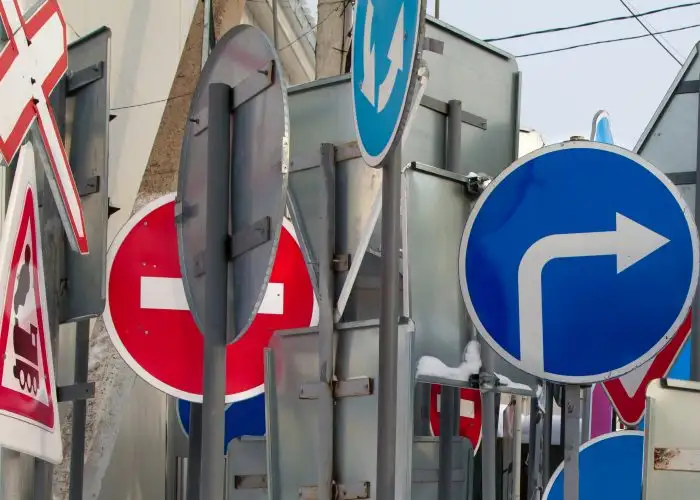
While some road signs in Europe mirror their American counterparts (stop sign, yield sign) and others are self-explanatory (bumps in the road, slippery surface), there are some signs you’ll want to learn before hitting the road.
At each border crossing, you’ll generally find a sign that shows speed limits within city limits, outside city limits, and on the highways. Pay attention to these, as many times speed limits are not posted when you enter a city or town, but you’re expected to know the limit.
You’ll likely see a lot of white arrows on blue backgrounds; simply follow the arrow. Other important signs to know how are priority road, slashes through a sign, and no parking. Wikipedia has a useful table comparing traffic signs by country.

While some road signs in Europe mirror their American counterparts (stop sign, yield sign) and others are self-explanatory (bumps in the road, slippery surface), there are some signs you’ll want to learn before hitting the road.
At each border crossing, you’ll generally find a sign that shows speed limits within city limits, outside city limits, and on the highways. Pay attention to these, as many times speed limits are not posted when you enter a city or town, but you’re expected to know the limit.
You’ll likely see a lot of white arrows on blue backgrounds; simply follow the arrow. Other important signs to know how are priority road, slashes through a sign, and no parking. Wikipedia has a useful table comparing traffic signs by country.
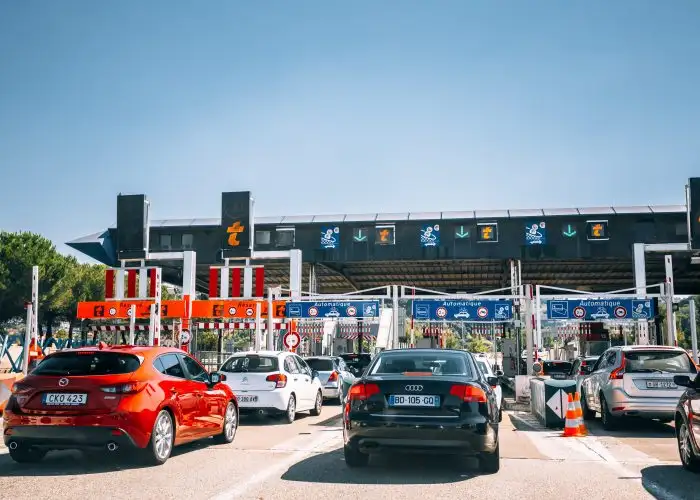
While driving on highways, you may encounter tolls in two forms: traditional tollbooths based on the distance you travel, and vignettes (essentially pre-paid stickers that cover the time period you wish to travel).
In places like France and Italy, you’ll see toll plazas. Have cash as backup in case the machines don’t accept your credit or debit card. Alternatively, see what back roads you can take to your destination for a cheaper, more scenic ride.
Several countries instead require vignettes. Look up the cost prior to travel so you know what to expect, look for signs prior to border crossings to purchase one, and, of course, make sure you have cash, preferably exact change. You never know when a card reader will conveniently “break” or when the shop won’t have change for a 20 euro bill.
In Switzerland you’ll pay 40 Swiss francs for a one-year vignette, while in Austria you have choices depending on the duration of your travel. Illustrations usually show the recommended way to affix the sticker.
If you skip paying for a vignette, you could face fines if caught—and roadside cameras can catch cars without the sticker.

Several international clubs have reciprocal agreements with AAA, offering varying services to AAA members. For example, AAA members driving in Portugal are entitled to free roadside assistance, including repair on the spot or towing, via the Automovel Club de Portugal. Similar offerings are available via auto clubs in Germany and Great Britain.
Look carefully, as some reciprocal agreements are for AAA members using a private vehicle, not a rental car, such as the offerings in Sweden via Motormannens Riksforbund and Italy via the Automobile Club D’Italia.
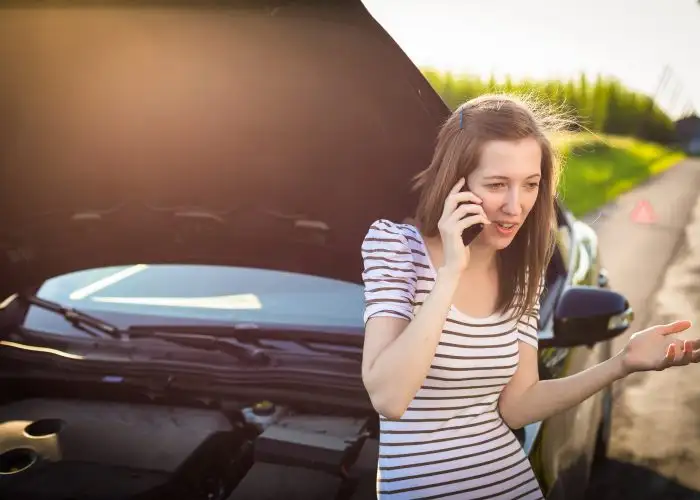
No one goes on vacation thinking they’ll get into an accident or need help, but it’s easy enough to plug emergency numbers into your phone before you go—just in case you need them. The emergency number 112, like 911 in the U.S., is free of charge to dial from most mobile phones (some mobile carriers even route 112 in the U.S. to 911). In the United Kingdom, 999 also works for emergencies, while Denmark has 114 specifically for the nearest police station.
In many European countries, you will find a reflective vest in your rental vehicle, as well as a first aid kit and warning triangle. If you get in an accident or break down, the driver should put on the safety vest and place the warning triangle near the car so that approaching vehicles know there’s a car to avoid ahead.
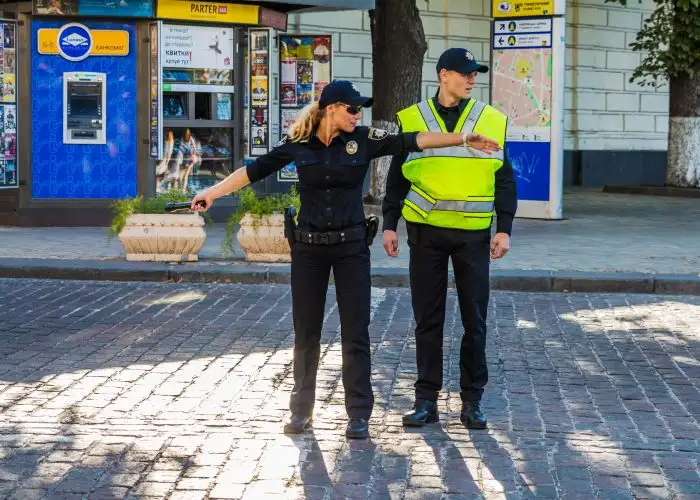
Each country has its own nuances to road travel and it pays to familiarize yourself with local laws. For example, it’s illegal in most countries to talk on a cellphone without a hands-free headset, and many require you to always drive with your headlights on. It’s also illegal in places like Germany, France, and the Netherlands to pass on the right. Stick to the right lane except to pass, or else the drivers behind you will start flashing their lights as a not-so-subtle reminder to get over.
Obeying the law, particularly speed limits, will help you avoid fines. You may not see police officers enforcing traffic because traffic cameras monitor all the key spots for violations, whether on a road through town, overpass near a city, or through a construction zone.
Not drinking and driving should go without saying, but it’s worth noting the laws are often stricter and fines larger than in the U.S., with 0.05 percent the legal limit for drivers in most countries. There is zero tolerance in the Czech Republic, Hungary, and several others. Drivers are required to carry an unused Breathalyzer in France. Even if you weren’t drinking prior to an accident, do not drink after the accident, either. Countries like Germany can test your blood alcohol level up to six hours after an incident.
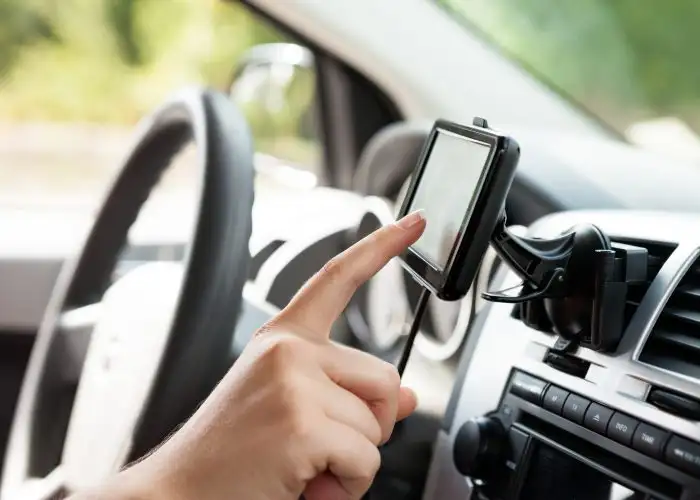
These days, we’re used to having cellphones with maps. But even on a European cellphone plan, it’s easy to run out of high-speed data quickly or lose service in mountainous areas. While you can take old-fashioned maps (they’re always good to have for back up), you can also load up a GPS you already own with European maps.
For example, Garmin has maps you can download to your GPS immediately (if there’s space) or SD cards to plug into your device.
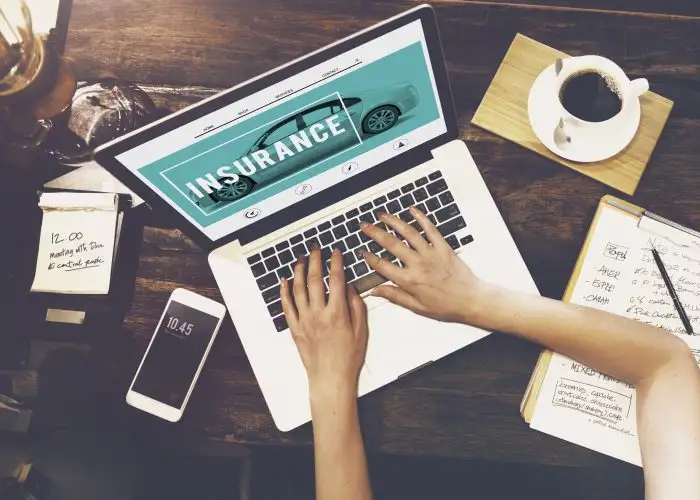
Sure, insurance is a boring topic. And it’s one you can easily dismiss with, “I don’t need it because I’m an excellent driver” or “my credit card has me covered.” Even if you’re the best driver, others around you may not be. And even if your credit card offers some type of coverage for rentals, you’ll want to check for a few things prior to dismissing the need for additional insurance.
Make sure your credit card covers insurance on rental cars in the particular country you’re visiting, the type of car you want to rent, theft in addition to damage, and the number of rental days covered. You’ll want your credit card’s policy in hand for navigating any difficulties at the rental car counter, and you should use the same credit card to make the reservation and pay for the rental to ensure coverage.
If you do accept a collision damage waiver (CDW) offered by rental car companies, whether by mistake or because the country requires you to, consider your credit card coverage void.
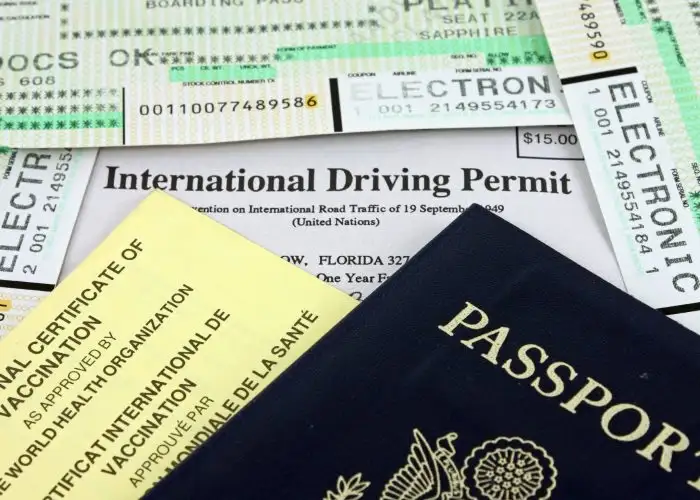
An international driving permit has your name, photo, and driver information translated to 10 languages. The U.S. Department of State recommends getting one before driving abroad. Note that you may also need a valid U.S. or local license in addition to the permit, depending on the country.
The U.S. Department of State also offers highlights on local traffic laws, road safety, and more. Choose your country and then click “Travel & Transportation.”
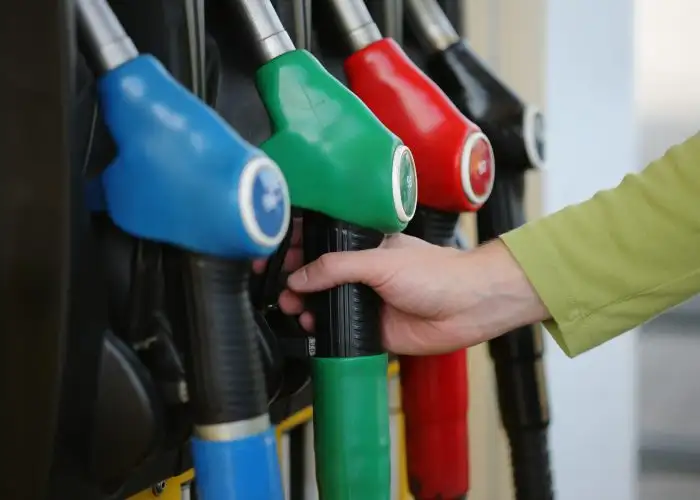
To avoid an unnecessary detour to the auto body shop during your travels, know the word for gas or diesel in the local language, depending on your car. While in many countries you’ll find some version of 95 and 98 for unleaded fuel, and diesel is diesel, there are other variations you may encounter.
The Automobil Club der Schweiz has a helpful table with local names for fuel across Europe. Luckily, if you’re a AAA member and happen to use the wrong fuel in the Netherlands, you can receive on-the-spot complete cleaning at a discount via the ANWB.
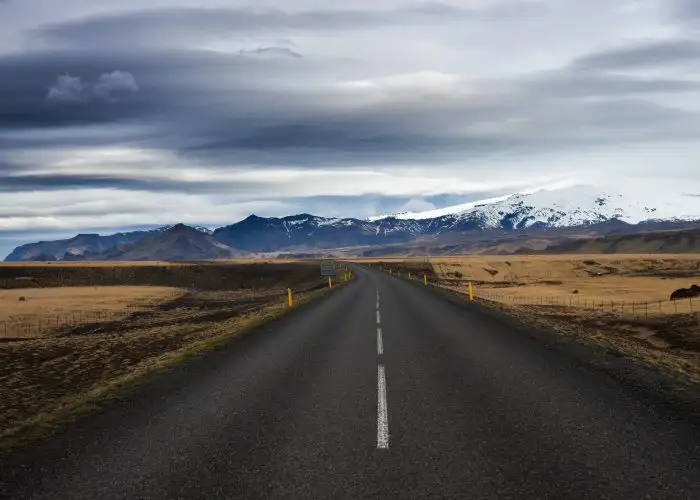
Mountain pass closures are standard in some parts of Europe during winter. Some countries (including France, Sweden, and Switzerland) require you to carry snow chains and use them when road signs indicate the need. Rental car companies often have them available, usually for an additional fee.
Snow tires are mandatory in many areas, too. If you’re driving in winter or heading to snowy areas, make sure your rental is equipped with the proper tires (tip: look for M+S, mud and snow, and a mountain with a snowflake marked on the sidewall of the tire). Factoring in extra travel time for the weather is always a good idea, too.
More from SmarterTravel:
- 10 Strangest Places to Stop on a U.S. Road Trip
- 8 Things You Need for a Road Trip with Your Pet
- Forgotten Europe: 10 Places Where Time Stands Still
We hand-pick everything we recommend and select items through testing and reviews. Some products are sent to us free of charge with no incentive to offer a favorable review. We offer our unbiased opinions and do not accept compensation to review products. All items are in stock and prices are accurate at the time of publication. If you buy something through our links, we may earn a commission.
Related
Top Fares From
Today's Top Travel Deals
Brought to you by ShermansTravel
Shop and Save with Country Inns...
Patricia Magaña
 Hotel & Lodging Deals
Hotel & Lodging Deals
$229 -- Chicago: Discounted Rates and...
Francesca Miele
 Hotel & Lodging Deals
$229+
Hotel & Lodging Deals
$229+
$188 -- Honolulu: Save on Oceanview...
Abigail Lamay
 Hotel & Lodging Deals
$188+
Hotel & Lodging Deals
$188+




